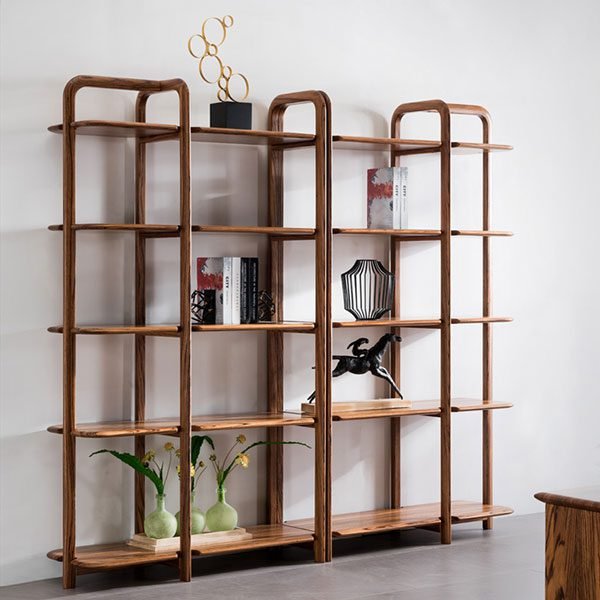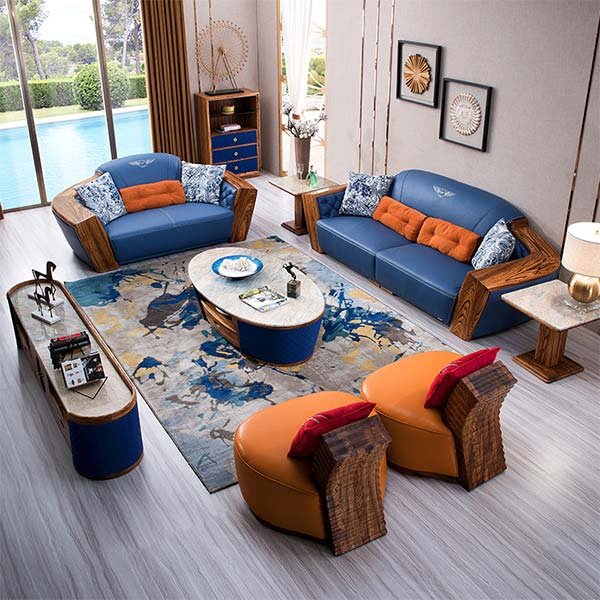“Preserving the Past, Nurturing the Present: Unveiling the Beauty of Reclaimed Wood Furniture”
Choosing the Right Finish for Your Reclaimed Wood Furniture
Reclaimed wood furniture has become increasingly popular in recent years due to its unique and rustic charm. However, owning and maintaining reclaimed wood furniture requires some special care and attention. One crucial aspect of caring for your reclaimed wood furniture is choosing the right finish. In this article, we will provide insight into the maintenance and care of reclaimed wood furniture, with a focus on selecting the appropriate finish.
When it comes to reclaimed wood furniture, the finish serves as a protective layer that enhances the beauty of the wood while safeguarding it from damage. There are several options available for finishes, each with its own advantages and considerations. One popular choice is a clear varnish or polyurethane finish. This type of finish provides a glossy and durable coating that protects the wood from moisture, stains, and scratches. It is relatively easy to apply and maintain, making it a practical choice for everyday use.
Another option to consider is an oil finish. This type of finish penetrates the wood, enhancing its natural beauty and providing a more matte appearance. Oil finishes are often preferred for their ability to bring out the unique grain patterns and colors of reclaimed wood. However, they may require more frequent reapplication compared to varnish or polyurethane finishes.
For those who prefer a more eco-friendly option, there are natural wax finishes available. These finishes are made from beeswax or carnauba wax and provide a soft and smooth sheen to the wood. Natural wax finishes are easy to apply and maintain, but they may not offer the same level of protection as varnish or oil finishes. They are best suited for furniture that is not exposed to heavy use or moisture.
In addition to considering the type of finish, it is essential to prepare the reclaimed wood before applying any coating. Sanding the wood surface is crucial to remove any roughness or imperfections. It also helps the finish adhere better to the wood. Start with a coarse-grit sandpaper and gradually move to finer grits for a smooth and even surface.
Before applying the finish, ensure that the reclaimed wood furniture is clean and free from dust or debris. Use a soft cloth or brush to remove any dirt or particles. Applying the finish in a well-ventilated area is also important to prevent the inhalation of fumes.
Once the finish is applied, it is essential to follow the manufacturer’s instructions for drying and curing times. Avoid placing any objects on the furniture until the finish has fully cured to prevent any marks or damage. Regular maintenance, such as dusting and cleaning with a mild soap and water solution, will help preserve the beauty and longevity of your reclaimed wood furniture.
In conclusion, choosing the right finish for your reclaimed wood furniture is crucial for its maintenance and care. Whether you opt for a clear varnish, oil finish, or natural wax, each option has its own benefits and considerations. Proper preparation and application of the finish, along with regular maintenance, will ensure that your reclaimed wood furniture remains beautiful and durable for years to come.
Tips for Cleaning and Maintaining Reclaimed Wood Furniture
Reclaimed wood furniture has become increasingly popular in recent years due to its unique and rustic charm. However, like any other type of furniture, it requires proper maintenance and care to ensure its longevity and beauty. In this article, we will provide you with some valuable tips for cleaning and maintaining your reclaimed wood furniture.
First and foremost, it is important to keep in mind that reclaimed wood furniture is often more delicate than new wood furniture. Therefore, it is crucial to handle it with care. Avoid dragging or sliding the furniture across the floor, as this can cause scratches and damage to the wood. Instead, lift and carry the furniture when moving it.
Regular dusting is essential for maintaining the appearance of reclaimed wood furniture. Use a soft, lint-free cloth or a feather duster to gently remove dust from the surface. Avoid using abrasive materials or harsh chemicals, as they can strip away the natural patina and finish of the wood. If necessary, you can lightly dampen the cloth with water or a mild wood cleaner.
When it comes to spills and stains, it is important to act quickly. Blot the spill with a clean cloth or paper towel to absorb as much liquid as possible. Avoid rubbing the stain, as this can push it deeper into the wood. If the stain persists, you can use a mixture of mild soap and water to gently clean the affected area. Be sure to dry the wood thoroughly afterwards to prevent any moisture damage.
To protect the surface of your reclaimed wood furniture, it is recommended to use coasters, placemats, and trivets. These will help prevent heat marks, water rings, and scratches caused by everyday use. Additionally, avoid placing hot or wet items directly on the wood surface, as this can cause damage.
Another important aspect of maintaining reclaimed wood furniture is to keep it away from direct sunlight and extreme temperature changes. Prolonged exposure to sunlight can cause the wood to fade and lose its natural color. Similarly, extreme temperature changes can cause the wood to expand or contract, leading to cracks and warping. Therefore, it is best to place your furniture in a well-ventilated area away from windows and heating or cooling vents.
In terms of long-term maintenance, it is recommended to periodically apply a protective finish to your reclaimed wood furniture. This will help seal the wood and protect it from moisture, stains, and scratches. There are various types of finishes available, such as wax, oil, or polyurethane. Choose the one that best suits your furniture and follow the manufacturer’s instructions for application.
In conclusion, proper maintenance and care are essential for preserving the beauty and longevity of your reclaimed wood furniture. Handle it with care, regularly dust it, clean spills promptly, use protective measures, and keep it away from direct sunlight and extreme temperature changes. By following these tips, you can enjoy your reclaimed wood furniture for many years to come.
How to Prevent and Repair Damage on Reclaimed Wood Furniture
Reclaimed wood furniture has become increasingly popular in recent years due to its unique and rustic charm. However, like any other type of furniture, it requires proper maintenance and care to ensure its longevity. In this article, we will provide valuable insights into how to prevent and repair damage on reclaimed wood furniture.
One of the most important steps in preventing damage to reclaimed wood furniture is to protect it from moisture. Wood is highly susceptible to water damage, which can cause warping, cracking, and rotting. To prevent this, it is essential to keep your furniture away from areas with high humidity, such as bathrooms or kitchens. Additionally, using coasters and placemats can help protect the surface from spills and heat damage.
Regular cleaning is another crucial aspect of maintaining reclaimed wood furniture. Dust and dirt can accumulate on the surface, leading to scratches and dullness over time. To clean your furniture, use a soft cloth or a feather duster to remove any loose particles. Avoid using harsh chemicals or abrasive cleaners, as they can damage the wood’s finish. Instead, opt for a mild soap solution or a specialized wood cleaner.
In the unfortunate event that your reclaimed wood furniture does get damaged, it is essential to address the issue promptly. Small scratches and dents can often be repaired using simple techniques. For minor scratches, you can try using a wood filler or a wax crayon that matches the color of the wood. Gently rub the filler or crayon over the scratch until it is filled, then buff the area with a soft cloth.
For deeper scratches or gouges, you may need to sand the affected area. Start with a fine-grit sandpaper and gradually work your way up to a coarser grit until the scratch is no longer visible. After sanding, apply a wood stain or finish to match the rest of the furniture. Remember to always test the stain or finish on a small, inconspicuous area before applying it to the entire piece.
In some cases, reclaimed wood furniture may develop cracks or splits. These can be more challenging to repair, but it is not impossible. Start by cleaning the area thoroughly and removing any loose debris. Then, apply wood glue to the crack or split and use clamps to hold the pieces together until the glue dries. Once the glue has dried, sand the area and apply a matching stain or finish.
Prevention is always better than cure when it comes to maintaining reclaimed wood furniture. Regularly inspect your furniture for any signs of damage or wear and address them promptly. Avoid placing heavy objects on the furniture, as this can cause stress and lead to cracks or breaks. Additionally, consider applying a protective sealant or wax to the surface of the wood to enhance its durability and resistance to damage.
In conclusion, proper maintenance and care are essential for preserving the beauty and longevity of reclaimed wood furniture. By following these tips and techniques, you can prevent and repair damage, ensuring that your furniture remains in excellent condition for years to come. Remember to always handle your furniture with care and seek professional help if you are unsure about any repairs. With the right approach, your reclaimed wood furniture will continue to be a cherished and timeless addition to your home.
Заключение
Заключение: Изучение поддержки и ухода за мебелью из вторичного дерева позволяет понять, что такая мебель требует особого внимания и заботы. Регулярная очистка и обработка мебели, использование защитных покрытий и избегание прямого воздействия влаги и солнечных лучей помогут сохранить ее красоту и прочность на протяжении долгого времени. Осознание особенностей ухода за мебелью из вторичного дерева поможет ее владельцам наслаждаться ее уникальностью и долговечностью.



